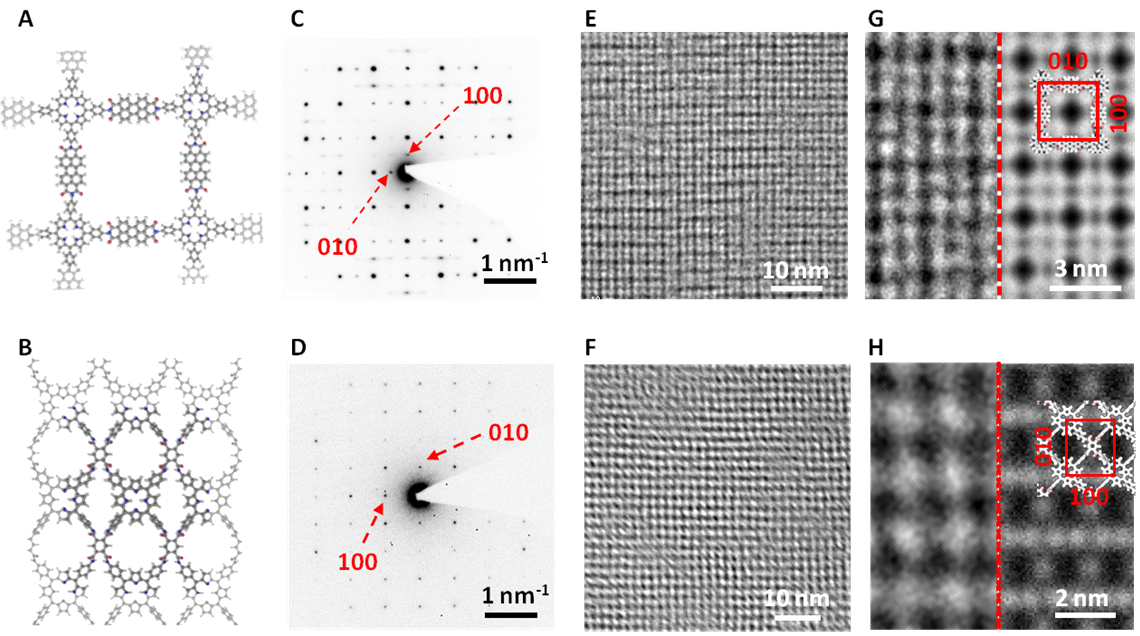H. Qi, T. Gorelik, U. Kaiser
2D polymers
Topological polymerization holds the promise for the rational design of material properties, which can be achieved by modifying the functional groups on the involving monomers [2]. It may offer access to a wide spectrum of future applications, such as electronics, optoelectronics, energy storage and generation, catalysis, membrane technologies and sensors. The first attempt on two-dimensional (2D) polymerization dates back to Gee’s experiments in 1935 [3]. However, despite extensive research efforts over the last decades , the synthesis of 2D polymers is still in its infancy [4,5]. Specifically, the realization of topological 2D polymers with high crystallinity, as well as the structural characterization of such irradiation-sensitive organic crystals, remain formidably challenging.
Within the scope of our collaboration with TU Dresden, we aim at (i) developing a general strategy for 2D polymerization with molecular-level structure control, (ii) establishing reliable TEM imaging and diffraction techniques for the structure elucidation of beam-sensitive 2D polymers, thus paving the way for the rational design and synthesis of crystalline 2D polymers and organic 2D materials in general.
In our preliminary work, we have already demonstrated the molecular structures of 2D polyimide and polyamide synthesized at an air-water interface by using low-dose electron diffraction and HRTEM imaging techniques. And for the first time, the grain boundary and grain edge structures of organic 2D materials have been unraveled. For future investigations, we will further exploit the full potential of the low-voltage high-resolution transmission electron microscopy (20kV-80kV) developed in Ulm. The key intention is to reduce/prevent the knock-on process by operating below the threshold energy, providing access to the atomic registry of the 2D polymers, such that the structure-functionality relationship can be better elucidated.

[1] Staudinger, H. Ber. Dtsch. Chem. Ges. 53, 1073 (1920).
[2] Stupp, S., Son, S., Lin, H. and Li, L. Science 259, 59 (1993).
[3] Gee, G. Proc. Royal Soc. A. 153, 129 (1935).
[4] Perepichka, D. and Rosei, F. Science 323, 216 (2009).
[5] Editorial Nature. Chem. 6, 747 (2014)
Prof. Dr. Feng, TU Dresden
-
